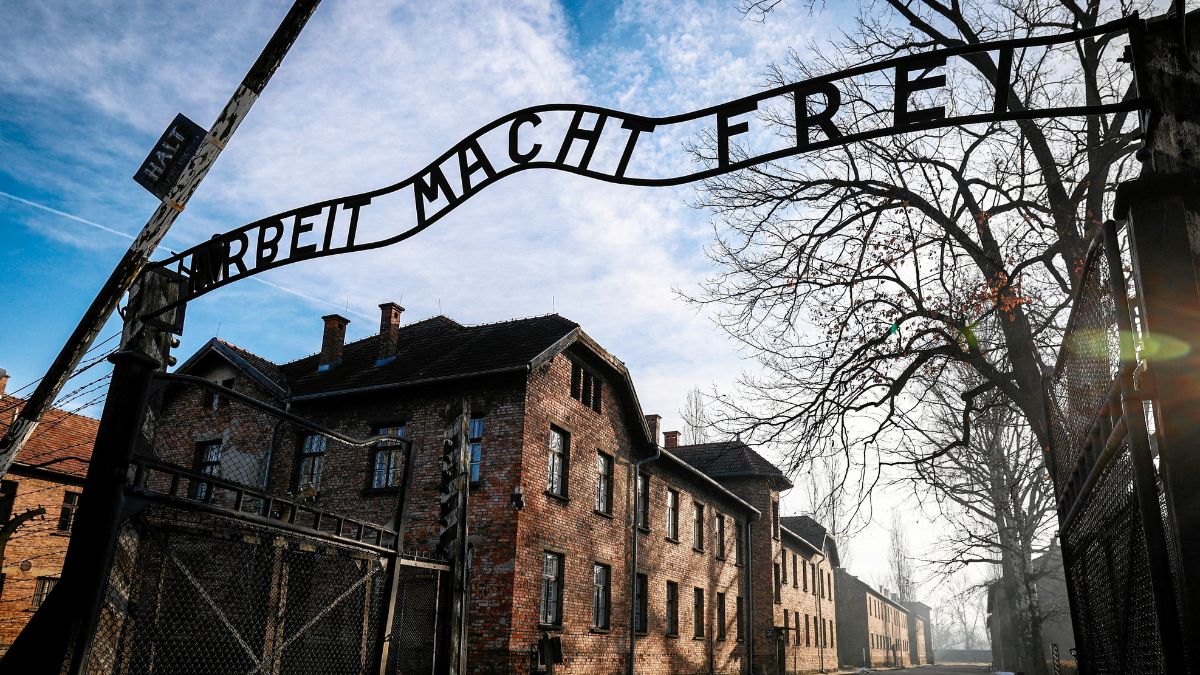The former home of Auschwitz commandant Rudolf Höss, located just steps away from the infamous Nazi concentration camp, is undergoing a profound transformation.
Acquired by the US-based Counter Extremism Project (CEP), the villa at 88 Legionow Street will soon reopen as the Auschwitz Center on Hate, Extremism, and Radicalization.
This initiative, launched in collaboration with the Auschwitz-Birkenau State Museum and under UNESCO’s patronage, aims to combat extremism and honour the memory of the Holocaust victims.
“The idea behind the project is to create something that doesn’t exist—a global centre to fight extremism in the house of one of the historically worst extremists and antisemites that ever existed,” said Hans Jakob Schindler, the senior director of CEP, told CNN.
CEP is honored to partner with Auschwitz-Birkenau Museum, under the patronage of the Polish Ministry of Foreign Affairs and UNESCO, and in collaboration with architect Daniel Libeskind.@AuschwitzMuseum @PolandMFA @UNESCO @DanielLibeskind#ARCHERatHouse88https://t.co/hyBTGkRtHp
— CEP (@FightExtremism) January 22, 2025
The centre is set to open on the 80th anniversary of the liberation of Auschwitz, marking a poignant moment in history.
From “paradise” to a research hub
Once described as “paradise” by Höss’s wife Hedwig, the villa was a tranquil haven for the commandant’s family despite its horrifying proximity to Auschwitz. The manicured garden, complete with a pond, sandpit, and exotic plants, shielded the family from the atrocities occurring just yards away.
Höss’s children played with turtles, rode horses, and swam in the nearby Sola River, oblivious to the industrial-scale murder orchestrated by their father.
Inside the villa, the commandant meticulously planned the most efficient methods for executing the Third Reich’s genocidal policies. He oversaw the construction of additional gas chambers, enabling the murder of more than 1.1 million people at Auschwitz.
Höss later documented his actions in a chilling memoir written before his execution in 1947, providing insights into the mind of a man who described himself as “committed to discipline and dedicated to order.”
The legacy of Rudolf Höss
Höss’s tenure at Auschwitz from 1940 to 1944 was marked by unparalleled brutality. Under his command, the camp became the deadliest site of the Holocaust. He implemented the use of Zyklon B gas to “protect the mental health” of his guards while maximising the efficiency of mass killings.
Despite witnessing the suffering of countless victims, Höss rationalised his actions as obedience to orders, referring to the extermination of Jews as a “mistake” rather than a crime.
After the war, Höss was captured by British forces and became the first high-ranking Nazi official to testify about the Holocaust’s scale at the Nuremberg Trials. He was later tried in Poland and hanged at Auschwitz, mere yards from the villa where he once lived.
A house of contradictions
The villa’s dark history contrasts starkly with its portrayal in the Oscar-winning film The Zone of Interest. The movie, set within the Höss family home, explores the “banality of evil,” a concept popularised by philosopher Hannah Arendt.
Director Jonathan Glazer highlighted the ordinary nature of the commandant and his family, urging viewers to confront the uncomfortable reality that such atrocities were committed by human beings, not monsters.
Diaries left behind by the family’s housekeeper and Höss himself further illuminate the dichotomy between their domestic life and the horrors of the Holocaust.
These writings reveal the lengths to which the family went to maintain a semblance of normalcy, from frosted windows and high walls to muffling the cries of victims with revved-up motorcycles.
Honouring memory, fighting hate
The Counter Extremism Project envisions the villa as a place of learning and action. Mark Wallace, CEO of CEP, described the initiative as a means to transform a symbol of evil into a beacon for combating hate and antisemitism.
“Eighty years later, it’s clear that while essential, ‘never forgetting’ is not enough to prevent the hate and antisemitism that right now grips our society,” Wallace said.
After an unprecedented rise in antisemitism and extremism in the past two years, ARCHER at House 88 aims “to make sure extremism is no longer ordinary” - my comments to @CNN.#ARCHERatHouse88 @ARCHERatHouse88 @jaketapper @MelissaBellCNN pic.twitter.com/0wE5H3C6aI
— Mark Wallace (@mark_d_wallace) January 24, 2025
One of the first symbolic acts undertaken by CEP was attaching a mezuzah to the villa’s front door, reclaiming the space for remembrance and inclusivity. The centre will serve as both a research hub and a museum, with part of the property dedicated to exhibits on the Holocaust and the Höss family’s life.
Controversy & commitment
The project has not been without criticism. Historian Simon Schama called the decision to open the villa to the public “appalling,” arguing that it risks glorifying the perpetrators rather than honouring the victims.
However, Wallace and his team remain steadfast in their mission. “Our plan is to convert the ordinary house of the greatest mass murderer into the extraordinary symbol of the fight against antisemitism and extremism,” he said.
Also Watch:
The Auschwitz Center on Hate, Extremism, and Radicalization is poised to become a vital resource for academics, activists, and visitors seeking to understand and combat the forces of hate.
With inputs from agencies


)

)
)
)
)
)
)
)
)



